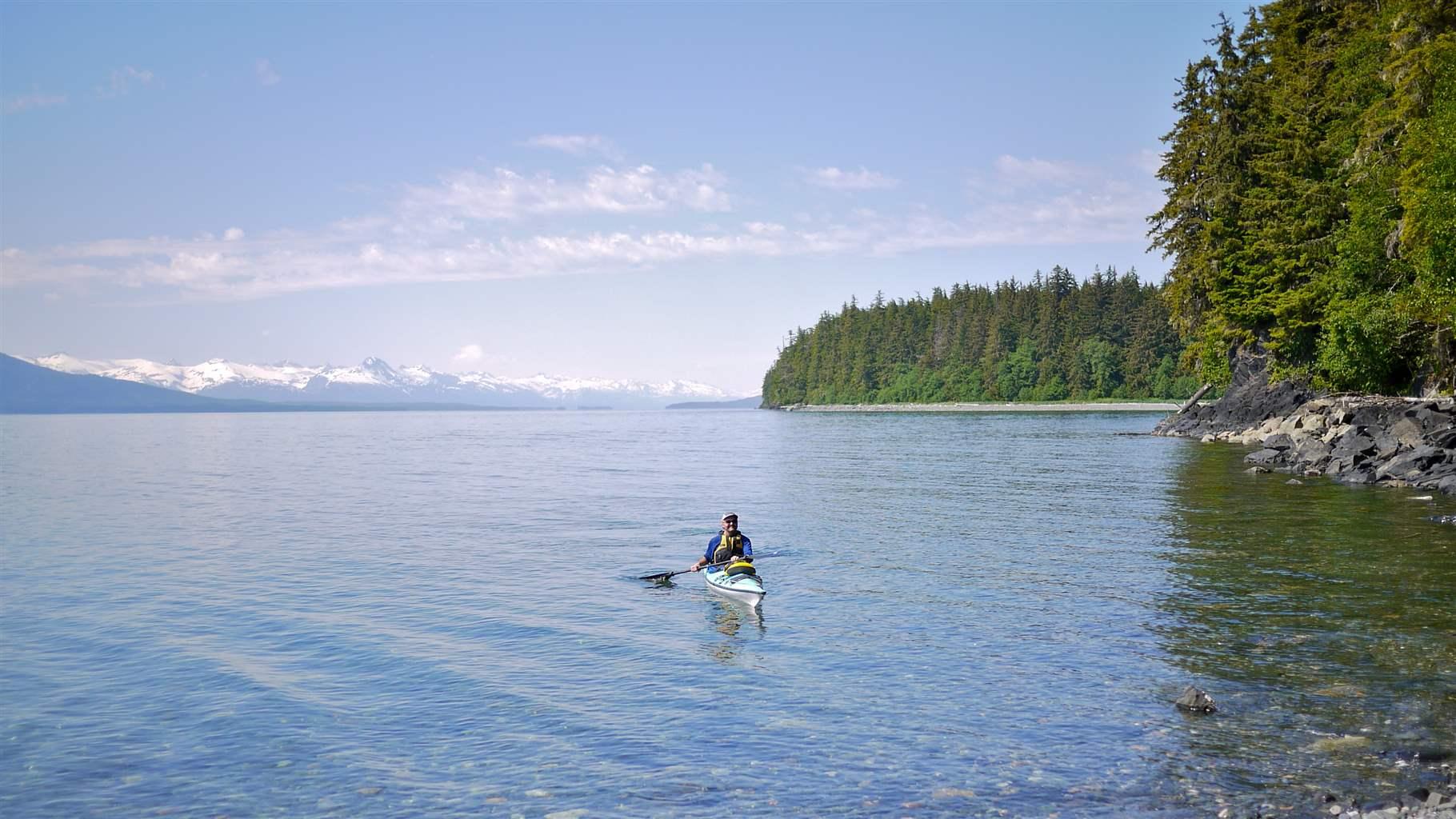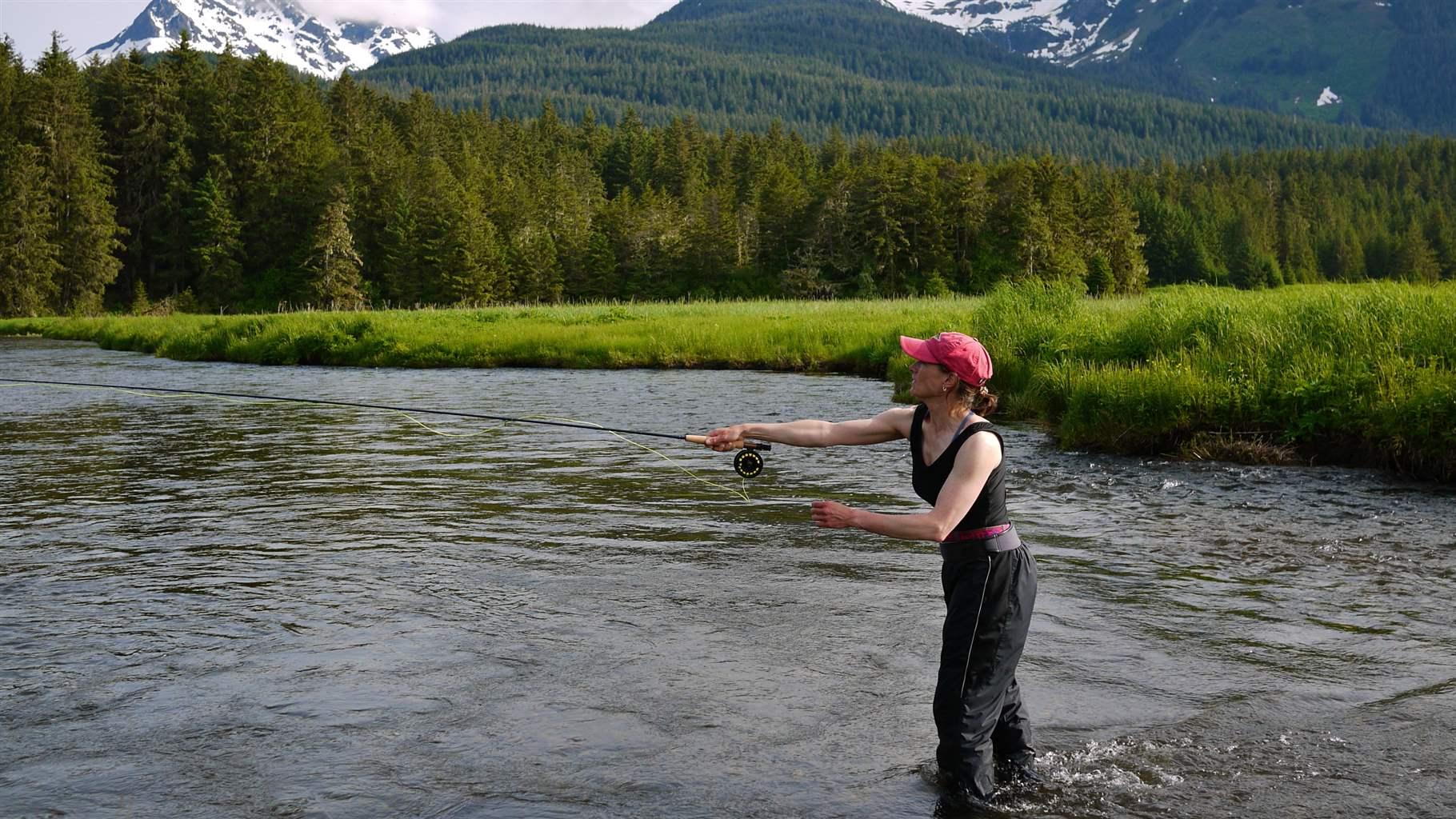In a move that will benefit a range of wildlife, including salmon and brown bears, along with commercial fishing fleets, Indigenous Alaskans, tourism operators, and others in the state, the U.S. Department of Agriculture in late November proposed restoring long-standing protections across 9 million acres of Tongass National Forest in southeast Alaska. This would reverse a Trump administration decision that opened roadless areas to development in approximately half of the Tongass, the largest forest in the U.S. and the largest intact coastal temperate rainforest in the world.
A broad swath of Alaskans opposed the 2020 rollback of the Roadless Area Conservation Rule in the Tongass, including tribes, the commercial fishing community of southeast Alaska, and tourism-centered businesses. In fact, a dozen southeast Alaska tribes petitioned the federal government at the time to maintain the full roadless rule protections in the Tongass to ensure sustainability of the land that supports traditional foods and cultural practices. That petition also requested the creation of a Traditional Homelands Conservation Rule.
Sustaining the roadless rule protections also makes economic sense: Fishing and tourism account for 26% of the region’s economy, while the timber industry accounts for only 1%. Further, the nonpartisan budget watchdog group Taxpayers for Common Sense reported that in fiscal year 2019, the U.S. Forest Service lost $16.1 million on timber sales in the Tongass and since 1980 has lost more than $1.7 billion on sales of timber from there.
“Restoring the Tongass’ roadless protections supports the advancement of economic, ecologic, and cultural sustainability in southeast Alaska in a manner that is guided by local voices,” Agriculture Secretary Tom Vilsack said Nov. 19 as he announced the decision to consider reversal. “The proposed rule is considerate of Alaska’s tribal nations and community input and builds on the region’s economic drivers of tourism and fishing.” As the agency noted in its statement on the proposal, Tongass National Forest is within the traditional homelands of the Tlingit, Haida, and Tsimshian peoples, holds more biomass per acre than any other rainforest in the world, and stores more carbon than any other U.S. national forest.
Since the original national roadless protections were put in place in 2001, the rationale for conserving the last roadless areas in the Tongass has been buoyed by numerous scientific studies showing that large, contiguous protected areas are necessary to sustain healthy ecosystems. Trees, for example, help lessen the effects of climate change by absorbing and storing carbon; the Tongass, because of its size, accounts for 8% of all carbon sequestered by U.S. forests each year.
In the Tongass, the roadless rule has protected ancient stands of Sitka spruce, western hemlock, western red cedar, and Alaska cedar as well as salmon habitat. Old-growth trees provide shade and reduce erosion, which keep streams cool and clear and enable salmon to continue to play their vital role in the ecosystem as food for people and wildlife, as a foundation for local economies, and—when the fish die after spawning—as fertilizer for the surrounding land.
The public has until Jan. 24 to comment on the Department of Agriculture proposal to reinstate roadless protections on the Tongass National Forest. You can submit comments electronically; by mail to Alaska Roadless Rule, USDA Forest Service, P.O. Box 21628, Juneau, Alaska 99802–1628; by hand at the Forest Service office at 709 W. Ninth St., Juneau, Alaska 99801-1807; or by email to [email protected].
By reinstating roadless protections to the Tongass National Forest, the U.S. can avert damage to the forest, honor Indigenous peoples, support local economies, fight climate change, and help ensure that the Tongass serves the interests of all Americans far into the future.
Ken Rait is a project director and Suzanne Little is an officer with The Pew Charitable Trusts’ U.S. public lands and rivers conservation project.
Credit: Source link


































